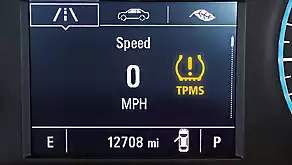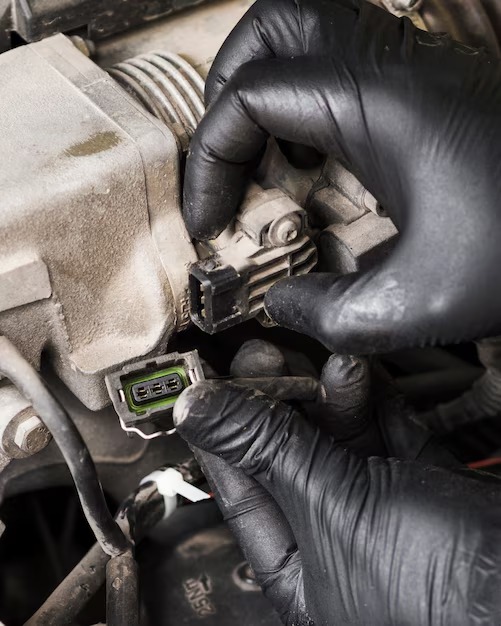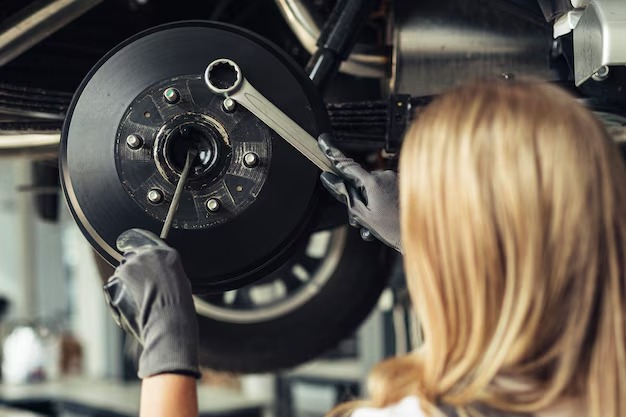How to Adjust Coilovers Stiffness – The Complete Guide preload dampen

How to Adjust Coilovers Stiffness – The Complete Guide preload dampen
Coilovers are a popular suspension upgrade for car enthusiasts looking to improve the handling and performance of their vehicles. One of the key features of coilovers is the ability to adjust their stiffness, allowing drivers to fine-tune their ride for different road conditions and personal preferences.
In this step-by-step guide, we will walk you through the process of adjusting the stiffness of coilovers, ensuring that you have the knowledge and confidence to make the necessary changes to your suspension system. Whether you prefer a softer, more comfortable ride or a stiffer, sportier feel, this guide will help you achieve the perfect balance for your driving style.
Step 1: Find the Adjustment Knob
The first step in adjusting your coilovers’ stiffness is to locate the adjustment knob. Typically, it can be found at the top of the coilovers’ damper assembly. Depending on the brand and model of your coilovers, the adjustment knob may be easily accessible or require the removal of some components. Consult your coilovers’ instruction manual for specific guidance.
Step 2: Start with an Initial Setting
Before making any adjustments, it is essential to establish a baseline setting. This will serve as a reference point for future adjustments and allow you to assess the impact of each change. A common practice is to start with a medium setting, neither too soft nor too stiff. Keep in mind that this initial setting may need further fine-tuning based on your driving experience.
Step 3: Clockwise or Counterclockwise?
The adjustment knob typically has markings indicating the direction of adjustment. Clockwise rotation often increases stiffness, while counterclockwise rotation decreases it. Refer to the instruction manual for your specific coilovers to confirm the direction of adjustment. Remember, small incremental changes are usually more effective than significant adjustments.
Step 4: Test and Evaluate
After making an adjustment to the coilovers’ stiffness, take your vehicle for a test drive. Pay attention to how it feels on different types of roads, corners, and during braking and acceleration. Assess whether the changes have achieved your desired handling characteristics, considering factors such as comfort, responsiveness, and stability. If necessary, repeat the adjustment process until you find the perfect balance.
This step-by-step guide should give you the confidence to adjust the stiffness of your coilovers effectively. Remember, it’s crucial to take your time, make incremental changes, and evaluate the results to achieve the desired performance and comfort for your driving style. Enjoy the journey of optimizing your suspension system!
Understanding Coilovers Stiffness
When it comes to adjusting coilovers, one of the key factors to consider is the stiffness. Coilover stiffness refers to the resistance of the suspension system to compression and rebound forces. It plays a crucial role in determining how a vehicle handles, including its cornering ability, braking performance, and overall ride quality.
Coilovers Components
Before diving into coilover stiffness, it’s important to understand the basic components of a coilover system. A typical coilover setup consists of a shock absorber, coil spring, and an adjustable threaded body. The threaded body allows for easy adjustment of ride height, while the shock absorber and coil spring work together to absorb and dampen vibrations from the road surface.
Spring Rate and Preload
The stiffness of a coilover is determined by the spring rate, which measures how much force is required to compress the spring by a certain amount. A higher spring rate translates to a stiffer suspension and vice versa. The preload, on the other hand, refers to the initial tension applied to the spring when the suspension is at rest. It affects the ride height and the overall balance of the suspension.
Coilovers typically come with adjustable spring perches that allow you to adjust preload by tightening or loosening the spring. This adjustment affects the ride height and can also alter the balance between front and rear suspension stiffness.
Effects of Stiffness Adjustment
Adjusting the stiffness of your coilovers can have a significant impact on your vehicle’s performance. Increasing the stiffness can improve cornering ability by reducing body roll, but it may also result in a harsher ride. On the other hand, decreasing the stiffness can provide a more comfortable ride, but it may compromise the vehicle’s handling characteristics.
It’s important to find a balance that suits your driving needs and preferences. Experimenting with different stiffness settings and taking into account factors such as road conditions, driving style, and vehicle weight can help you find the optimal setup for your coilovers.
Overall, understanding coilover stiffness is essential for achieving the desired handling and ride quality. By adjusting the stiffness of your coilovers, you can fine-tune your vehicle’s suspension to deliver the best performance and comfort for your specific needs.
Importance of Adjusting Coilovers Stiffness
Properly adjusting the stiffness of your coilovers is crucial for achieving optimal performance and handling from your vehicle’s suspension system.
Coilovers are a key component of a vehicle’s suspension system, providing support, stability, and comfort while driving. By adjusting the stiffness of the coilovers, you can fine-tune the suspension to suit your driving style and the specific road conditions you encounter.
Improved Handling: Adjusting the coilovers’ stiffness allows you to optimize your vehicle’s handling characteristics. A stiffer suspension setup can reduce body roll, improve cornering grip, and enhance overall stability. This is particularly important for high-performance driving or competitive racing where precise control and responsiveness are essential.
Enhanced Comfort: On the other hand, if you prefer a more comfortable ride, you can adjust the coilovers to soften the suspension. This can help absorb bumps, potholes, and other road irregularities, providing a smoother and more enjoyable driving experience. By finding the right balance of stiffness, you can enjoy both performance and comfort on the road.
Adapting to Road Conditions: Different road surfaces and conditions require different suspension setups. By adjusting the coilovers’ stiffness, you can adapt your vehicle’s suspension to handle various types of terrain and challenges. Whether you are driving on a smooth track, a bumpy city street, or a gravel road, having the ability to adjust your suspension stiffness enables you to optimize your vehicle’s performance and stability.
Personalization: Every driver has their own preferences when it comes to how their vehicle feels on the road. Adjusting the coilovers’ stiffness allows you to personalize your driving experience, tailoring the suspension setup to match your individual preferences. Whether you want a firm and sporty feel or a softer and more comfortable ride, being able to adjust the coilovers’ stiffness gives you the freedom to create a suspension setup that suits you.
Overall, properly adjusting the stiffness of your coilovers is essential for maximizing the performance, handling, and comfort of your vehicle’s suspension system. By fine-tuning the suspension setup to your liking and road conditions, you can enjoy a more controlled, responsive, and enjoyable driving experience.
Tools Required for Adjusting Coilovers Stiffness
Adjusting the stiffness of your coilovers is a relatively simple task that requires a few essential tools. Before you start, make sure you have the following items on hand:
1. Jack and Jack Stands
A jack and jack stands are necessary for lifting your vehicle off the ground and providing a stable platform for working on the suspension. Make sure you have a suitable jack and stands that can safely support the weight of your vehicle.
2. Lug Wrench or Socket Set
You will need a lug wrench or socket set to remove the wheels from your vehicle. This will allow you to access the coilovers and make adjustments to the stiffness.
3. Coilover Adjustment Tool
Most coilovers come with their own adjustment tool, which is specifically designed to adjust the stiffness of the suspension. This tool usually has multiple settings or a dial that allows you to fine-tune the damping characteristics.
4. Adjustable Wrench or Spanner
An adjustable wrench or spanner may be needed to loosen or tighten the locking rings on the coilovers. This will allow you to make adjustments to the spring perch without damaging the threads.
5. Tape Measure or Ruler
A tape measure or ruler can be helpful for measuring the ride height before and after making adjustments to the coilovers. This will allow you to ensure that the suspension is properly balanced and the desired ride height is achieved.
With these tools in hand, you will be ready to adjust the stiffness of your coilovers and fine-tune your suspension to your desired preference. Remember to follow the manufacturer’s instructions and take your time to make accurate adjustments.
Step 1: Determining the Current Stiffness Setting
Before making any adjustments to the stiffness of your coilovers, it is crucial to determine the current stiffness setting. This will not only help you in understanding the current performance of your suspension system but also enable you to make more informed adjustments later on.
To determine the current stiffness setting, you will need to reference the technical specifications provided by the manufacturer of your coilovers. These specifications typically include the range of adjustment for the stiffness setting, which is usually measured in pounds per inch (lbs/in) or kilograms per millimeter (kg/mm).
Once you have located the specifications, you will need to measure the distance between the upper and lower mounts of the coilovers. This measurement will serve as a reference point for determining the current stiffness setting. It is important to measure the distance with the vehicle at rest and in its normal driving position.
Next, you will need to calculate the current spring rate of your coilovers. The spring rate is determined by dividing the weight of the vehicle at each corner by the distance measured between the upper and lower mounts. This calculation will give you the current spring rate in lbs/in or kg/mm, depending on the unit of measurement specified by the manufacturer.
Example:
Let’s say the distance between the upper and lower mounts of your coilovers is 10 inches and the weight of the vehicle at each corner is 500 pounds. By dividing 500 pounds by 10 inches, you would get a spring rate of 50 lbs/in.
Keep in mind that this example is for illustration purposes only and the actual measurements and calculations may vary depending on your specific coilover setup and vehicle weight.
Once you have determined the current stiffness setting, you can move on to the next step of adjusting the coilovers to achieve your desired performance characteristics.
Step 2: Adjusting Coilovers Stiffness
Adjusting the stiffness of coilovers is an important step in achieving the desired ride quality and performance. This step-by-step guide will help you understand how to adjust the stiffness of your coilovers.
1. Understand the Basics
Before making any adjustments, it’s important to understand the basics of coilovers and their stiffness settings. Coilovers consist of a shock absorber surrounded by a coil spring. The stiffness of the coilovers refers to how quickly the shock absorbers respond to bumps and compressions.
2. Find the Adjustment Knob
The adjustment knob is usually located on the top of the shock absorber. It allows you to change the stiffness settings by increasing or decreasing the resistance provided by the shock absorber.
3. Determine Your Desired Stiffness
Before making any adjustments, think about the type of driving you’ll be doing and the desired ride quality. If you want a stiffer and sportier feel, you may want to increase the stiffness. If you prefer a softer and more comfortable ride, you’ll want to decrease the stiffness.
4. Make Small Adjustments
When adjusting the stiffness, it’s best to make small incremental changes. Start by turning the adjustment knob in one direction by a quarter of a turn. Take the vehicle for a test drive to feel the difference in stiffness.
5. Test and Evaluate
After each adjustment, take the vehicle for a test drive to evaluate the stiffness. Pay attention to how the car responds to bumps and corners. If it feels too bouncy or unstable, you may have increased the stiffness too much. On the other hand, if it feels too soft or wallowy, you may have decreased the stiffness too much.
6. Fine-Tune the Settings
Continue making small adjustments and test driving until you find the desired stiffness. It’s important to fine-tune the settings to achieve the optimal balance between performance and comfort.
By following these steps, you’ll be able to adjust the stiffness of your coilovers and optimize your vehicle’s ride quality and performance.
Step 3: Testing and Fine-Tuning the Stiffness Setting
Once you have adjusted the coilovers to the desired initial stiffness setting, it is time to test the suspension and fine-tune the stiffness as needed. Following these steps will ensure that you have a properly adjusted suspension that meets your specific driving needs and preferences.
Step 3.1: Initial Test Drive
Take your vehicle for an initial test drive to assess the current stiffness setting. Pay attention to how the car handles over various road conditions. Does it feel too soft or too stiff? Is there excessive body roll in corners? Note any areas where the suspension could be improved.
Step 3.2: Gathering Feedback
Ask yourself and any passengers for feedback on the ride quality. Their observations can help identify any areas that need adjustment. Keep in mind any specific driving scenarios or road conditions that may affect the stiffness requirement, such as smooth highways or bumpy city roads.
Step 3.3: Making Fine-Tuning Adjustments
Based on the initial test drive and feedback, make small, incremental adjustments to the coilover stiffness setting. Start by making slight adjustments to the front and rear dampening settings and then retest the suspension. Monitor how the changes affect the vehicle’s handling and ride comfort.
Note: It is important to make only small adjustments at a time to accurately gauge the impact on the suspension. Rapid and drastic changes can lead to unpredictable handling and potentially unsafe driving conditions.
Step 3.4: Repeating and Evaluating
Continue repeating the test drive and fine-tuning process until you achieve the desired level of stiffness that provides optimum handling and comfort. It may take several iterations to find the perfect balance for your specific driving style and preferences.
Remember: The suspension setup is a personal preference, and what works for one driver may not work for another. Don’t be afraid to experiment and find the perfect stiffness setting that suits your needs.





